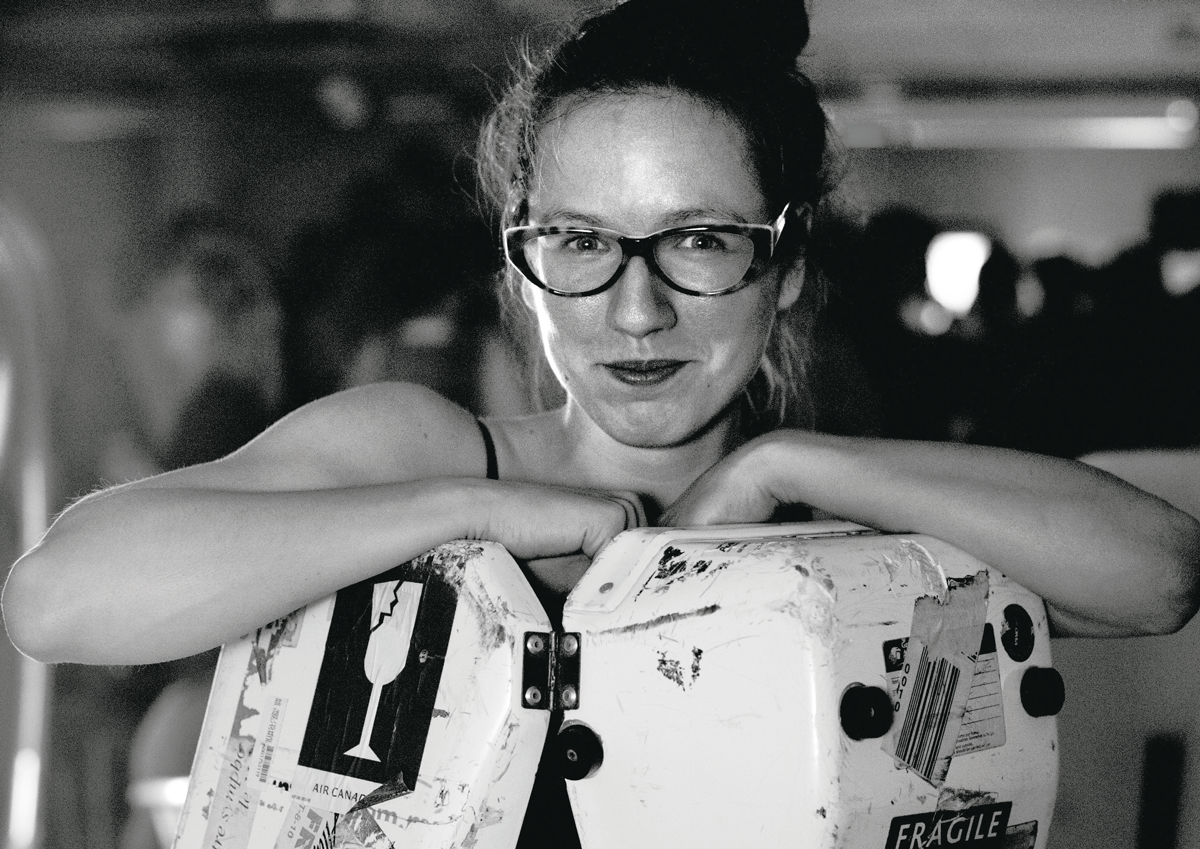Émilie Girard-Charest

BiographIE
Émilie Girard-Charest is a cellist, composer and improviser. As a soloist and member of various ensembles, she is actively involved in new music. As a performer, she has taken part in over sixty premieres and worked with numerous composers, including Malcolm Goldstein, Maxime McKinley, Brice Catherin, Cecilia Arditto, Marc Sabat, Graciela Paraskevaídis, Enno Poppe and Jorge Diego Vazquez. His works have been performed by various ensembles, including Novarumori, Qhirqhiña, Quasar, Continuum, Thin Edge New Music Collective, SuperMusique, the Molinari Quartet and as part of the No hay banda concert series.
Émilie graduated from the Conservatoire de musique de Montréal in cello (class of Denis Brott) and composition (class of Michel Gonneville). She also holds a Master CoPeCo (Contemporary Performance and Composition) from the Hochschule für Musik und Theater Hamburg, and is currently pursuing her studies under Philippe Hurel and Laurent Pottier at the Conservatoire National Supérieur Musique et Danse de Lyon and the Université Jean Monnet de Saint-Étienne, where in September 2016 she began a PhD focusing on the development of ergonomic writing for microtonality on the cello.
She is the recipient of several prizes and awards, including the Conservatoire de Musique de Montréal Foundation Career Development Grant (2014), the Prix d'Europe de Composition Fernand-Lindsay (2015) and the Canada Council for the Arts Robert Fleming Prize (2019). Émilie plays on an Angel Alvarez Verde cello.
THE PROJECT
During my participation in the Marché de Noël électronique #3 en 2022I had the opportunity to explore the electric cello for the first time. Although brief, my time at Art Zoyd Studios allowed me to glimpse new possibilities both in my approach to timbre and in my physical relationship to the instrument. These two aspects of playing are fundamental to my musical approach and are the main driving forces behind my work on acoustic instruments. It is therefore with great enthusiasm that I consider the possibility of a residency that will enable me to deepen these aspects of my playing and compositional work with electronics.
As regards the question of timbre, I am keenly interested in acoustic and psychoacoustic effects (beats, harmonics and subharmonics, additional and differential sounds, sympathetic resonances of the instrument, etc.), as well as in the sound artifacts specific to the cello and to bowed string instruments in general (bow noises, impacts of the fingers of the left hand hitting the fingerboard, rubbing sounds of position changes, etc.). I've explored these aspects in several works, including S'offrir for cello and viola, in which the violist acts as an assistant to the cellist by very gradually altering the tuning of his or her instrument as he or she plays it (a duet version with Robin Kirklar is available here. These fine modifications of the instrument's tuning have an impact not only on intonation, but also on spectral content. The role of the performer is to pay attention to these variations and to highlight them by adapting, for example, the speed, position or weight of the bow on the string, or the speed of movement of the turnbuckles (tailpiece screws with which tuning changes are made). In this way, the sound result will vary from one performance to the next, depending on the acoustics of the venue and the way the performers react to it. This type of material lends itself very well to work with electronics: by using different filters and distortions, I can work on the sound in such a way as to draw the listener's attention to specific characteristics of the timbre.
The second aspect I'd like to work on is that of energy in relation to the resistance of the body and materials. I have a very physical approach to the instrument, particularly in my improvisational approach, as can be seen in this recording made in 2021 for the Music Gallery (Toronto, Canada). Situations where the performer has to push his or her physical limits (due to speed, duration or volume, for example) stimulate me enormously and have led me to develop my endurance, gestural efficiency and agility. The performance I gave on electric cello last December in Valenciennes confronted me with this question in a new way. Indeed, the possibility of producing and sustaining a sound without necessarily having to make a sustained physical effort opens up new fields of investigation for me, which I look forward to exploring.
SOON...
IT'S ALREADY PAST!
11
Mar 2025
Flight experiment#3 (March 11, 2025)
@ Art Zoyd Studios
| Valenciennes, France
25
Nov 2024
Émilie Girard-Charest and Didier Casamitjana / SIMEC rehearsals (November 25)
@ Art Zoyd Studios
| Valenciennes, France
16
Nov 2024
Emilie Girard Charest in residence (November 15 and 16))
@ Art Zoyd Studios
| Valenciennes, France
09
Nov 2024
Émilie Girard-Charest and Kasper T. Toeplitz / GH Code (November 8-9)
@ Art Zoyd Studios
| Valenciennes, France
15
Oct 2024
Emilie Girard Charest + La fin des terres (October 15, 2024)
@ Le Phénix Scéne Nationale
| Valenciennes, France
27
Mar 2024
Emilie Girard Charest in residence (March 25-27)
@ Art Zoyd Studios
| Valenciennes, France
